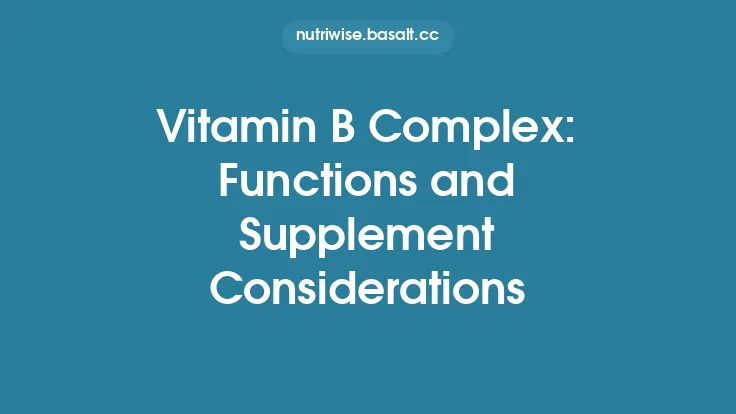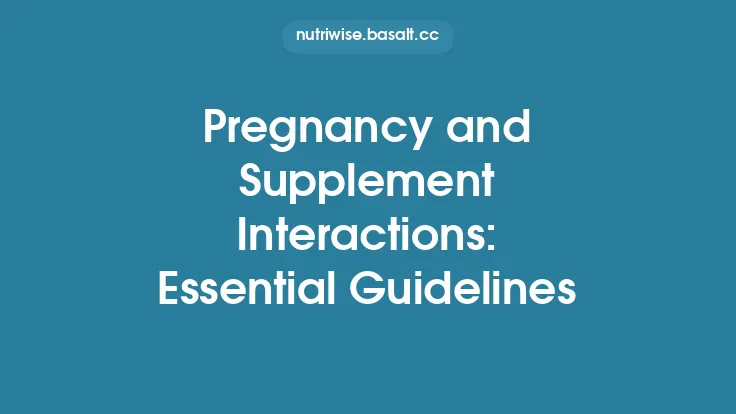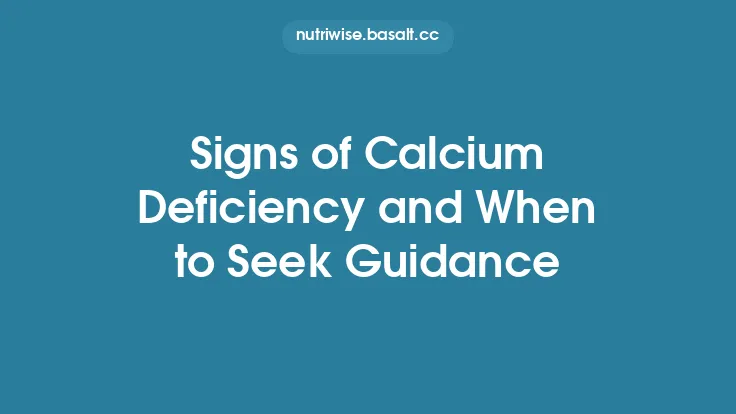Supplement use has surged in recent years, and many people now take multiple vitamins, minerals, herbs, and specialty compounds daily. While each product may be safe when taken alone, the cumulative effect of overlapping nutrients can push the body into a state of excess, sometimes leading to toxicity. Recognizing the subtle and overt signs of supplement overlap is essential for maintaining health, preventing adverse outcomes, and ensuring that the benefits of supplementation are not outweighed by unintended harm.
Understanding Supplement Overlap
What is overlap?
Overlap occurs when two or more supplements provide the same nutrient or a metabolically related compound, resulting in a total intake that exceeds the body’s physiological needs. This can happen unintentionally—for example, taking a multivitamin that already contains 100 % of the Recommended Dietary Allowance (RDA) for vitamin C while also using a separate ascorbic‑acid powder.
Why does it matter?
The human body tightly regulates many nutrients. When intake surpasses the regulatory capacity, excess is either stored (as with fat‑soluble vitamins) or excreted (as with water‑soluble vitamins). Persistent oversupply can overwhelm these mechanisms, leading to accumulation, altered metabolism, and, ultimately, toxicity.
Common sources of overlap
| Nutrient | Typical Supplement Sources | Typical Overlap Scenarios |
|---|---|---|
| Vitamin A (retinol/β‑carotene) | Liver oil capsules, cod liver oil, high‑dose retinol tablets, β‑carotene powders | Multivitamin + separate retinol supplement |
| Vitamin D | Cholecalciferol tablets, fortified dairy powders, high‑dose “immune support” blends | Multivitamin + high‑dose D3 capsule |
| Calcium | Calcium carbonate tablets, calcium citrate powders, bone‑health blends | Multivitamin + separate calcium supplement |
| Magnesium | Magnesium glycinate, magnesium oxide, “relaxation” blends | Multivitamin + separate magnesium citrate |
| Iron | Ferrous sulfate tablets, iron‑rich prenatal formulas, “energy” powders | Multivitamin + iron‑specific supplement |
| Vitamin E (tocopherols) | Mixed tocopherol capsules, antioxidant blends | Multivitamin + separate vitamin E capsule |
| B‑complex vitamins | B‑complex tablets, individual B‑vitamin powders (e.g., B12, B6) | Multivitamin + individual B‑vitamin supplement |
Physiological Pathways Leading to Toxicity
- Saturation of Transport Systems
Many nutrients rely on carrier proteins for absorption (e.g., the vitamin D‑binding protein). When plasma concentrations exceed the binding capacity, free, biologically active forms rise, increasing the risk of cellular damage.
- Enzyme Inhibition or Induction
Excessive amounts of certain minerals can inhibit enzymes that require other cofactors. For instance, high zinc intake can competitively inhibit copper absorption, leading to secondary copper deficiency.
- Oxidative Stress from Redox‑Active Metals
Overload of iron or copper can catalyze the Fenton reaction, generating hydroxyl radicals that damage lipids, proteins, and DNA.
- Altered Hormonal Feedback Loops
Vitamin D excess suppresses parathyroid hormone (PTH) secretion, which can disturb calcium homeostasis and bone remodeling.
- Storage in Fat‑Soluble Reservoirs
Vitamins A, D, E, and K are stored in hepatic and adipose tissue. Chronic oversupply leads to gradual accumulation, often without immediate symptoms, but with long‑term organ toxicity.
Recognizing Early Clinical Signs
Because many toxicities develop insidiously, early detection hinges on awareness of subtle cues. Below are hallmark patterns associated with specific nutrient excesses:
| Nutrient | Early Symptoms | Progression to Severe Toxicity |
|---|---|---|
| Vitamin A (retinol) | Dry skin, headache, nausea, blurred vision | Hepatomegaly, intracranial hypertension, bone pain |
| Vitamin D | Polyuria, polydipsia, mild fatigue | Hypercalcemia, nephrolithiasis, vascular calcification |
| Calcium | Constipation, mild abdominal cramping | Hypercalcemia, renal impairment, cardiac arrhythmias |
| Magnesium | Diarrhea (initially), muscle weakness | Hypermagnesemia → hypotension, respiratory depression |
| Iron | Nausea, abdominal pain, dark stools | Hepatotoxicity, cardiomyopathy, endocrine dysfunction |
| Vitamin E | Nausea, headache, blurred vision (rare) | Coagulation abnormalities, hemorrhagic stroke |
| Vitamin K (excess) | Usually asymptomatic | Hemolytic anemia, jaundice (rare) |
| Zinc | Metallic taste, nausea, loss of appetite | Copper deficiency, immune dysfunction, neurotoxicity |
Key observation: Early signs often mimic common, non‑specific ailments (e.g., gastrointestinal upset). A pattern of persistent or recurrent symptoms, especially when linked to supplement timing, should raise suspicion.
Laboratory Indicators of Excess
When clinical suspicion arises, targeted laboratory testing can confirm or rule out toxicity. Below are the most informative assays for each nutrient class:
- Serum 25‑hydroxyvitamin D: Levels > 100 ng/mL (250 nmol/L) suggest excess.
- Serum calcium (total and ionized): Hypercalcemia (> 10.5 mg/dL) may indicate vitamin D or calcium overload.
- Serum retinol: > 2.0 µg/mL points to vitamin A toxicity.
- Serum ferritin and transferrin saturation: Ferritin > 300 ng/mL (men) or > 200 ng/mL (women) with saturation > 45 % suggests iron overload.
- Serum magnesium: > 2.5 mg/dL indicates hypermagnesemia.
- Serum zinc and copper: Elevated zinc (> 150 µg/dL) with low copper (< 70 µg/dL) signals zinc‑induced copper deficiency.
- Liver function tests (ALT, AST, ALP, GGT): Persistent elevation may reflect fat‑soluble vitamin accumulation.
- Renal function (creatinine, BUN, eGFR): Important when calcium or vitamin D excess threatens kidney health.
Interpretation tip: Always compare results to reference ranges adjusted for age, sex, and physiological status. Isolated lab abnormalities without clinical correlation may be incidental; however, trends over time are more telling.
Differentiating Toxicity from Underlying Disease
Because many toxicity symptoms overlap with disease processes, a systematic approach helps avoid misdiagnosis:
- Temporal Relationship – Note when symptoms began relative to supplement initiation or dosage changes. A rapid onset after a new supplement strongly suggests a causal link.
- Dose‑Response Correlation – Higher supplement doses typically produce more pronounced symptoms. Reducing the dose should lead to symptom improvement if toxicity is the cause.
- Exclusion of Other Causes – Conduct a focused medical history to rule out infections, autoimmune conditions, or medication side effects that could mimic toxicity.
- Rechallenge (under supervision) – In ambiguous cases, a supervised re‑introduction of the supplement at a lower dose can confirm causality, but this should only be done with professional oversight.
Genetic and Metabolic Factors Influencing Susceptibility
Even with identical supplement regimens, individuals may experience different toxicity thresholds due to intrinsic factors:
- Polymorphisms in Transport Genes (e.g., *SLC23A1 for vitamin C, SLC30A8* for zinc) can alter absorption efficiency.
- Variations in Metabolizing Enzymes (e.g., *CYP24A1* for vitamin D catabolism) affect clearance rates.
- Differences in Binding Protein Levels (e.g., vitamin D‑binding protein) modify the proportion of free versus bound nutrient.
- Pre‑existing Subclinical Deficiencies – Paradoxically, individuals with marginal deficiencies may tolerate higher intakes before toxicity manifests, but they are also at risk for rebound deficiency if supplementation is abruptly stopped.
Genetic testing is not routinely required, but awareness of family history (e.g., hereditary hemochromatosis) can guide more vigilant monitoring.
Lifestyle and Dietary Context
Supplement overlap does not occur in a vacuum. The following lifestyle elements can amplify or mitigate toxicity risk:
- High‑Protein, High‑Calcium Diets – Dairy‑rich diets combined with calcium supplements increase the likelihood of hypercalcemia.
- Alcohol Consumption – Chronic alcohol intake impairs liver metabolism of fat‑soluble vitamins, potentially heightening toxicity.
- Intense Physical Activity – Endurance athletes often use magnesium and electrolyte powders; excessive stacking can push serum magnesium into the toxic range.
- Hydration Status – Dehydration reduces renal clearance of water‑soluble vitamins and minerals, concentrating them in the bloodstream.
Balancing supplement intake with dietary sources and lifestyle habits is a practical way to stay within safe margins.
Practical Steps for Self‑Monitoring
- Create a Supplement Inventory – List every product, dose, frequency, and the specific nutrients it contains. Include over‑the‑counter herbal blends, fortified foods, and “energy” powders.
- Calculate Total Daily Intake – Use reputable databases (e.g., NIH Office of Dietary Supplements) to sum each nutrient across all sources.
- Compare to Established Upper Intake Levels (ULs) – The Institute of Medicine (IOM) provides ULs for most vitamins and minerals. Staying below these thresholds is a first line of safety.
- Track Symptoms Systematically – Maintain a daily log noting any new or worsening symptoms, their timing, and any recent supplement changes.
- Schedule Periodic Lab Checks – For nutrients with narrow safety windows (vitamin D, calcium, iron, zinc), arrange baseline and follow‑up blood tests every 3–6 months, especially if you are on high‑dose regimens.
- Use Digital Tools – Apps that scan supplement labels and calculate cumulative nutrient intake can reduce manual errors.
When to Seek Professional Evaluation
- Persistent or Worsening Symptoms despite dose reduction.
- Laboratory Values Outside Normal Ranges (e.g., serum calcium > 10.5 mg/dL, 25‑OH vitamin D > 100 ng/mL).
- Signs of Organ Dysfunction such as jaundice, unexplained weight loss, or neurological changes.
- History of Genetic Predisposition to nutrient accumulation (e.g., hemochromatosis, Wilson’s disease).
- Concurrent Use of Prescription Medications that may interact with supplement metabolism, even if the focus of this article is on supplement‑supplement overlap.
A qualified healthcare professional—preferably one with expertise in nutrition or integrative medicine—can interpret lab results, adjust dosing, and provide individualized guidance.
Preventive Strategies Focused on Detection, Not Combination
While many resources emphasize how to combine supplements safely, this article concentrates on early detection and mitigation of overlap toxicity:
- Periodic Re‑Assessment – Every 6–12 months, review your supplement list for new products, discontinued items, or dosage changes.
- Seasonal Adjustments – Some nutrients (e.g., vitamin D) are seasonally variable; consider reducing supplemental doses during periods of high sun exposure.
- Rotational Supplementation – For non‑essential nutrients, alternating weeks or months can prevent chronic accumulation.
- Educate Yourself on ULs – Familiarize yourself with the upper limits for each nutrient; remember that ULs are set to protect the majority of the population, not just individuals with specific health conditions.
- Stay Informed on Reformulations – Manufacturers may change ingredient concentrations without prominent notice; always re‑read labels after a product update.
Closing Thoughts
Supplement overlap and toxicity represent a nuanced challenge in modern health maintenance. By systematically cataloguing supplement use, understanding the body’s regulatory limits, recognizing early clinical cues, and employing targeted laboratory monitoring, individuals can enjoy the benefits of supplementation while minimizing the risk of inadvertent excess. Vigilance, education, and a willingness to seek professional input when warning signs appear are the cornerstones of safe, effective supplement stewardship.





